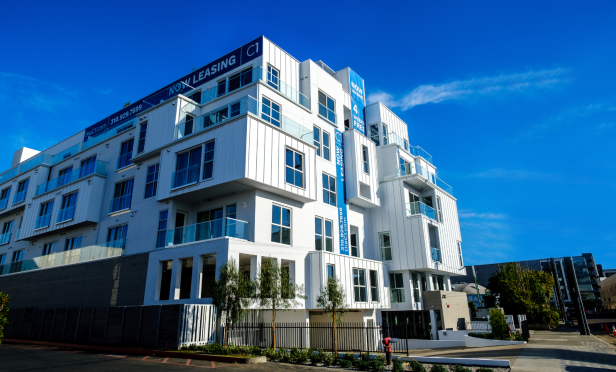 Co-living is becoming a reality. California Landmark Group is including co-living units in its latest multifamily project, C1. The 68-unit project in Marina del Rey's arts district will feature 51 market-rate units, with a mix of studio, one- and two-bedroom configurations, and 17 fully furnished co-living units. This will be the largest co-living project in Los Angeles to date.
Co-living is becoming a reality. California Landmark Group is including co-living units in its latest multifamily project, C1. The 68-unit project in Marina del Rey's arts district will feature 51 market-rate units, with a mix of studio, one- and two-bedroom configurations, and 17 fully furnished co-living units. This will be the largest co-living project in Los Angeles to date.
Co-living has grown in popularity as a solution to the rampant affordability problem. “We felt there is a need to address the affordability gap and co-living is certainly one of the answers. it makes sense in many respects,” Ken Kahan, president of California Landmark Group, tells GlobeSt.com. “Everyone knows LA has a huge housing problem. Given the high cost of housing and the lack of available land to construct new high density apartments co-living is one way to add more housing and more people per parcel.”
While co-living has been a commonly discussed idea, it has not been put to the test at scale. This is largely because co-living units are much more maintenance intensive and require a different business plan. “There are differences to design, financing, marketing and management,” says Kahan. “Creating fantastic communal spaces is the key to making the building successful in the very long term.”
In addition to changing the business plan, co-living comes with a unique set of challenges for developers in terms of property management. “There are many challenges including insuring that we properly address the unique needs of co-living tenants. For instance we provide housekeeping for the shared areas such as kitchens and living rooms,” says Kahan. “This is atypical in a traditional apartment project. The activities and communal experiences at C1 will be far more extensive than in a traditional building. Tenants in co-living units need to be compatible with each other. When they are not compatible we need to make sure we can address any possible issues. Finally, we need to make sure both the renters in the co-living units and the apartment unit utilize the building in a cohesive manner.”
CLG is overcoming those hurdles. C1's co-living units will average 1,650 square feet with three to six bedrooms and a choice of shared or private bathrooms. Common areas in the units will be maintained by management, including fully equipped modern kitchen, living and dining areas inside the unit and access to the building's common areas, which include a rooftop patio, pool and gym. This structure has significant benefits for both tenants looking for quality affordable space and ownership, which will get a higher rental rate per square foot. “We can offer a better price point and therefore draw a larger group of possible renters,” says Kahan. “In addition we can now offer multiple options for prospective tenants, from single room occupancies in shared housing to single, one and two bedroom units.”
This will not be the last co-living development for CLG. Kahn says that this firm is actively looking for other co-living development opportunities.
© Touchpoint Markets, All Rights Reserved. Request academic re-use from www.copyright.com. All other uses, submit a request to [email protected]. For more inforrmation visit Asset & Logo Licensing.






